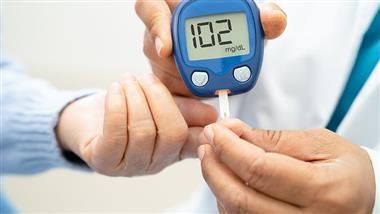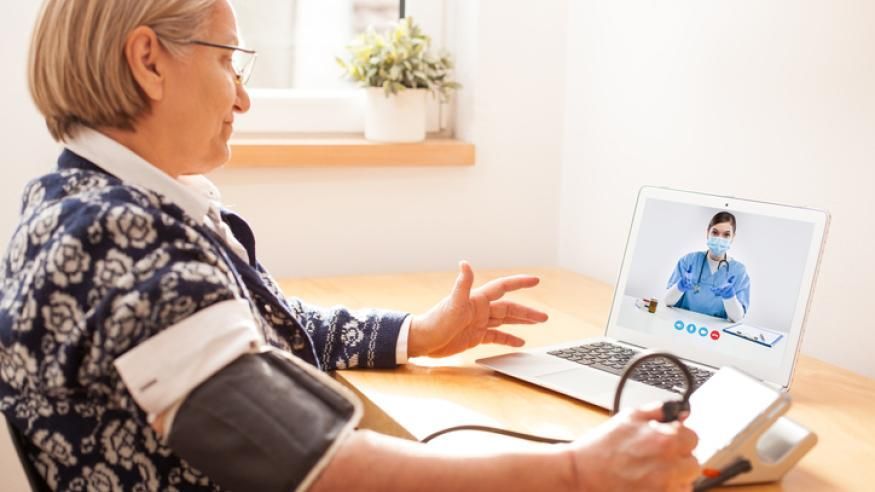Diabetes Fast Food Guide: What to Order at Starbucks
Ever wonder how to survive the drive-thru with diabetes? In our ongoing series, a dietitian walks through the best things to order at top fast food chains. This week we see what's brewing at Starbucks.
From Apple Crisp Oatmilk Macchiatos and Caramel Ribbon Crunch Frappuccinos to Glazed Doughnuts and Cinnamon Coffee Cake, Starbucks is renowned for its sugary coffee drinks and pastries, but it also offers a variety of diabetes-friendly alternatives.
Toby Smithson, a dietitian, person with diabetes, and author of Diabetes Meal Planning and Nutrition for Dummies, offered some general advice for making blood sugar-friendly choices at Starbucks, as well as some of her favorite diabetes-friendly picks on the menu.
6 Tips for Eating at Starbucks
1. Choose your beverages wisely
Individuals with diabetes should approach coffeehouse beverage choices with caution. Smithson’s top coffee recommendations are espresso or drip coffee blends ordered black (without any type of milk or sweetener added).
“The best choices include Americanos (iced or hot), or the Veranda Blend, Dark Roast, Medium Roast, or Clover Brewed," she said. “It's important to note that most coffee drinks are high in calories and carbs. The Peppermint Mocha contains approximately 500 calories – equivalent to a full meal.”
If you’re more of a tea drinker, good options are teas such as the Chai, Jade Citrus Mint, Emperor's Clouds & Mist, or herbal teas ordered hot or cold without milk or sugar.
2. Make whole-wheat wraps your friend
Opt for breakfast sandwiches in whole-wheat wraps instead of biscuits, English muffins, or other bread. One example of a more blood sugar-friendly choice would be the spinach, feta, and egg white wrap, which Smithson calls out below. It has 34 grams of carbohydrates but also several grams of fiber and 20 grams of protein per serving to slow down digestion.
3. Make condiment choices that don’t contain hidden sugar
Be cautious with condiments and dressings that may add hidden sugars or carbohydrates to your order. This includes food condiments like sriracha as well as drink toppings like whipped cream and flavorings like matcha green tea powder; all of these contain added sugar.
Opt for sugar-free options or ask for them on the side to control the amount you use, or consider using spices such as cinnamon, nutmeg, or unsweetened cocoa powder to enhance the flavor of your drinks without adding extra sugar.
4. Customize for your needs
Take advantage of Starbucks' customization options to make your order diabetes-friendly. This includes drink customization to avoid the added sugars mentioned above, but also foods that can be ordered with or without an assortment of add-ons.
“Oatmeal is also an excellent option for breakfast as it is high in fiber and can be customized,” Smithson said.
Smithson points out, for example, that you can leave all the sides off except for the nut mix and sweeten with a low-calorie sweetener such as stevia and flavor with cinnamon for a more diabetes-friendly version of oats that has 30-35 grams of carbohydrates.
5. Choose protein-rich snacks – and watch the fat content
Select protein-rich snacks like nuts, seeds, or hard-boiled eggs instead of high-carbohydrate items like pastries or cookies. Smithson also points out that it’s not just carbs that need to be considered when selecting the smartest food choices.
“Keep in mind that the recommendation for heart health is to keep our saturated fat consumption to not more than 13 grams per day,” she said.
6. Check nutritional information
You may want to familiarize yourself with Starbucks' nutritional information on its website or in-store pamphlets and even enter in calories and carbs for what you plan to order into a meal tracker ahead of time. Doing this will help you make informed decisions about your drink and snack choices, enabling you to manage your carbohydrate intake effectively.
Top diabetes-friendly Starbucks menu items
Below are some of Smithson’s top Starbucks menu picks for anyone monitoring blood sugars.
Spinach, Feta, & Egg White Wrap
"The Spinach Feta & Egg White Wrap is lower in saturated fat (3.5 grams) and higher in grams of fiber (3 grams) compared to the other hot meal food choices at Starbucks. With 34 grams of carbohydrate and 20 grams of protein per wrap, you just need to add a no-carb beverage to complete this meal," said Smithson.
Spinach, Feta, & Egg White Wrap: 290 calories, 8g fat, 34g carbohydrates, 3g fiber, 5g sugars, 20g protein, 840 mg sodium
Plain oatmeal
"Leave all the sides off except for the nut mix (if you like nuts) and sweeten with a low-calorie sweetener or cinnamon. This diabetes-friendly version of oats is about 30 grams of carbohydrates. To help slow down the absorption of carbs, you can order a side of turkey or beef jerky or a cheese stick," said Smithson.
Oatmeal (plain): 150 calories, 2.5g fat, 28g carbohydrate, 4g fiber, 0g sugar, 5g protein, 125 mg sodium
Eggs & Cheddar Protein Box
The Starbucks eggs and cheddar protein box contains the least amount of saturated fat (7 grams) and a good source of fiber (5 grams) compared to all the chain’s protein box offerings.
This protein box has 40 grams of carb and 22 grams of protein which makes it a good choice for balancing the carb and protein ratio for a meal and achieves a bonus for having 5 grams of fiber to help slow down absorption of the carbs.
Eggs & Cheddar Protein Box: 460 calories, 24g fat, 40g carbohydrates, 5g fiber, 21g sugar, 22g protein, 450 mg sodium
Tomato & Mozzarella on Focaccia
Compared to the other lunch entrees, the tomato mozzarella on focaccia has the lowest fat content (12 grams) and is low in saturated fat (4.5 grams) when comparing lunch choices at Starbucks. Note that it does contain 47 grams of carbs and only 1 gram of fiber, so you may need to make insulin dosing adjustments accordingly.
Tomato & Mozzarella on Focaccia: 360 calories, 12g fat, 47g carbohydrates, 1g fiber, 2g sugar, 15g protein, 590 mg sodium
Butter Popcorn
“A Starbucks bag of butter popcorn is the best diabetes-friendly snack option that they offer. The popcorn provides 18 grams of carbohydrates, 3 grams of fiber, and 7 grams of fat,” said Smithson.
Butter Popcorn: 150 calories, 7g fat, 18g carbohydrate, 3g fibers, 1g sugar, 2g proteins, 240mg sodium
Grande cold brew coffee with 2% milk
Smithson’s top cold drink recommendation is cold brew with a splash of lower-fat milk for extra creaminess.
“Another suitable choice is a cold brew coffee with 2% milk containing only 3 grams of carbs per 16-ounce cup,” she said.
Cold brew coffee (grande size, add 2% milk): 35 calories, 1.5g fat, 3g carbohydrates, 0 g fiber, 3g sugars, 2g protein, 40 mg sodium
Credited: [Author: Constance Brown-Riggs, MSEd, RDN, CDCES, CDN], [Source: diaTribe Learn MAKING SENSE OF DIABETES], [Site: https://diatribe.org/]
Healthy Bites















